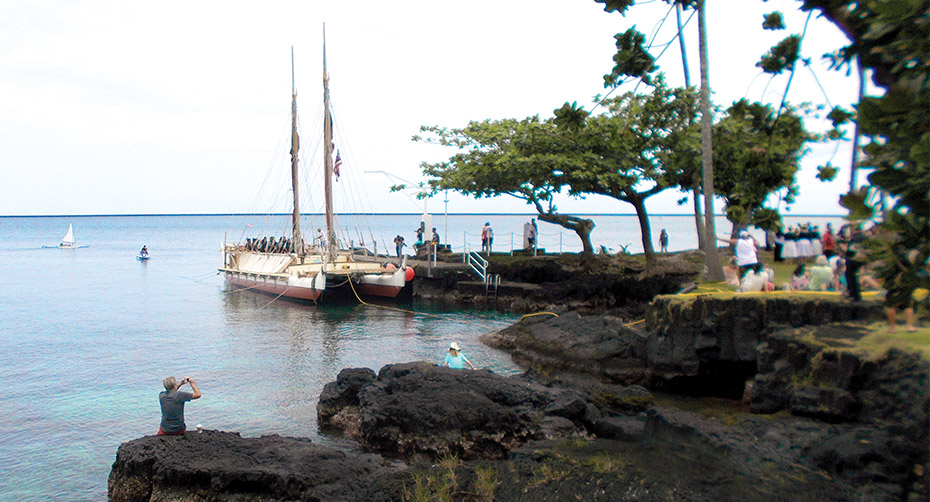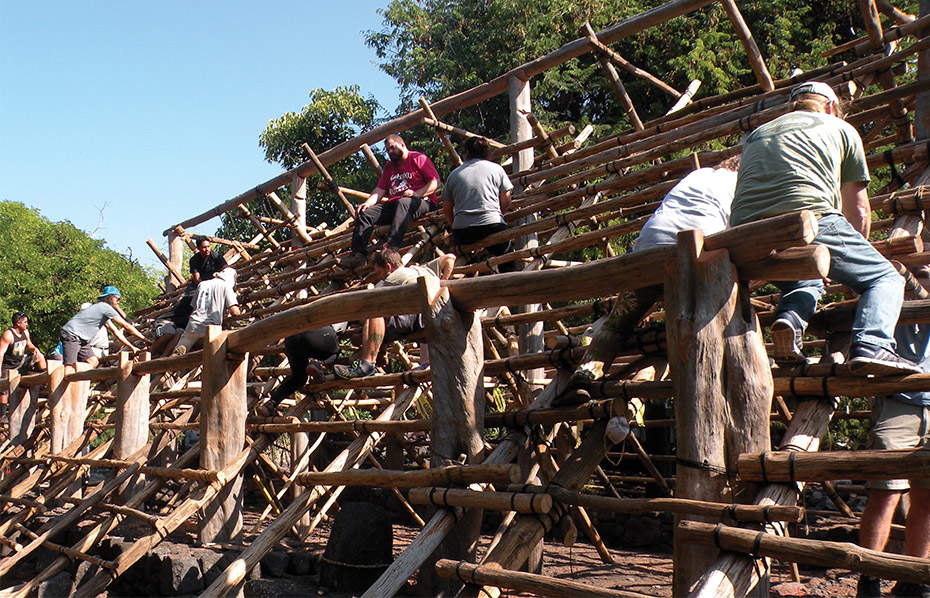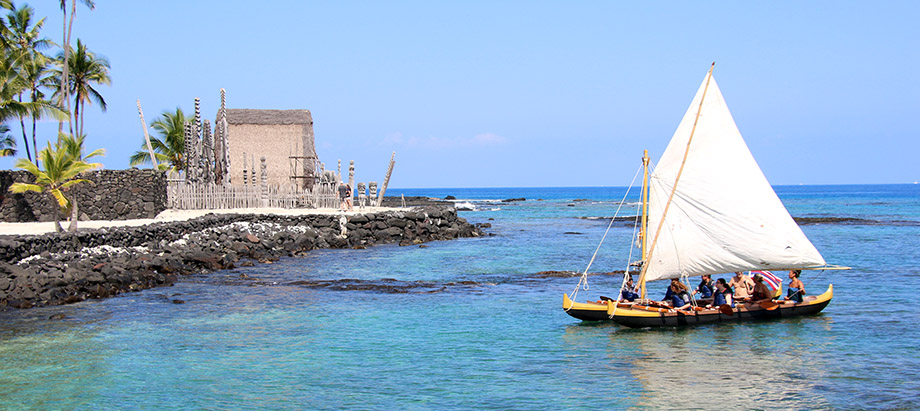
The Legacy: Pu‘uhonua o Hōnaunau National Historical Park – Celebrating 57 Years

By Lara Hughes
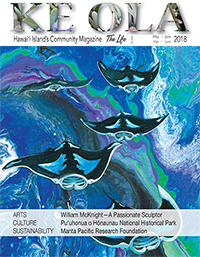
Since opening in 1961, Pu‘uhonua o Hōnaunau, a place of refuge, has been a cultural beacon for residents and visitors alike. Kawailehua Domingo, a descendant of South Kona and currently the park’s interpretive supervisor, is the third generation in her family to work at the Pu‘uhonua o Hōnaunau National Historical Park. Over the years, she has helped organize the park’s largest event, the Annual Cultural Festival, serving in a multitude of roles. Kawailehua explains, “Our goal during the festival is to convey the feeling and association with the historical period of the 1500s to the 1700s. Sharing the Hawaiian culture is a great reason to get together, and our festival gives visitors an enhanced one-on-one experience they will never forget.”
Kahaka‘io Ravenscraft is the park’s current cultural demonstrator and interpreter. His predecessor was Uncle Charlie Grace, a well-known cultural practitioner and traditional ki‘i (tiki) carver. Kahaka‘io is responsible for creating many of the themes involving the various festivals and ceremonies that take place at the park throughout the year. He says, “A big part of why we do the festival is to create that connection between the people and the land, the place and the resources.”
It is in that same spirit that Pu‘uhonua o Hōnaunau will be celebrating its 57th anniversary as a national historical park. The festivities are planned for Saturday and Sunday, June 23 and 24. Admission is free and open to all.
The Place: Honoring Our Wahi Pana
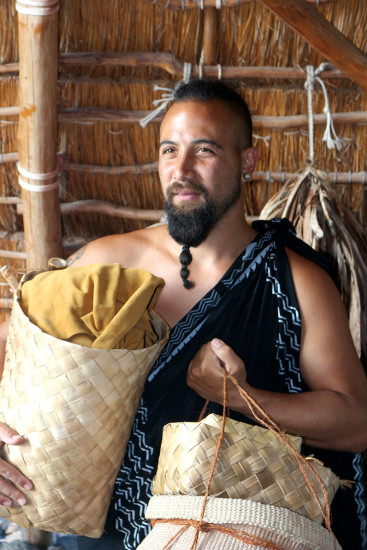
‘Wahi pana’ is a Hawaiian term that means a sacred place, a legendary place, or a place with a pulse. It is how Kahaka‘io refers to Pu‘uhonua o Hōnaunau and also the cultural festival and ceremonies that have been, and continue to be, conducted there. For him, the greatest importance lies in the act of bringing life to the place, keeping its heartbeat strong and demonstrating how the Hawaiian culture can thrive. “There is life in a place when fishermen are doing their traditions, when they are practicing their techniques and passing it on. When lauhala weavers collect lauhala (Pandanus leaves), when they do their work and they make their beautiful products,” he says, “that process is what brings life to the place.”
Kahaka‘io feels connected to the traditions and processes that are shared and celebrated at Pu‘uhonua o Hōnaunau. His kūpuna (ancestors) practiced, used, and lived by the same methods, knowledge, and mythology. He says this has provided him with a sense of identity and pride to carry the traditions forward to the coming generations on a local and even global scale. “It can inspire people to learn about Hawaiian culture and traditions. I think my favorite part of being here, especially during festival time, is connecting with so many diverse people that are out there. It’s like cultural exchange. You meet people from all over the world and you see just how connected we really are.”
The People: A Local and Global Community
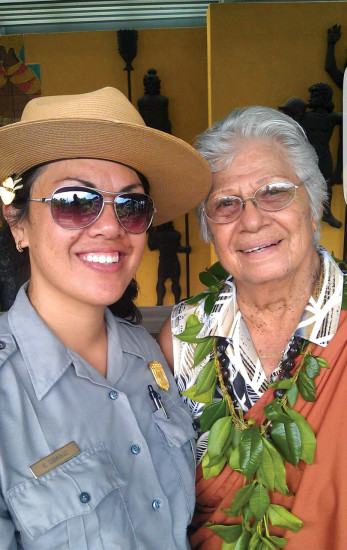
One of the many things that the cultural festival provides is a space for the community to come together. Whether it is through volunteering, taking up a role as a cultural demonstrator, or attending as a guest, it is apparent that participants have incredibly unique and amazing experiences. This is further evidenced by the fact that they continue to return each year. “We have a few visitors who plan their annual vacation during our festival,” says Kawai, “We also have a family that comes every year from the different Hawaiian Islands, who use our festival as their family reunion. They share their knowledge of weaving coconut fronds with visitors from all over the world and are able to spend time with each other and create new memories, year after year.”
Local clubs join in to lend a helping hand as well. Keōua Hōnaunau Canoe Club donates their canoes and time to the event. Captain Kiko Johnston-Kitazawa and his brother-in-law Dale Fergerstrom have been bringing their own wa‘a kaulua (double-hulled canoes) every year since the early 1990s and taking visitors out on canoe rides in Hōnaunau Bay. “An astonishing number of local and even Hawaiian kids have never been on a canoe, so even if it’s for a short time, it’s an exposure,” says Kiko. “You see the eyes open and light up, and exposing them to something like that makes them think about what it is that they would like to do.” He continues, “A society or a civilization is a tapestry or a net of many different interlocking skills and abilities, and it’s wonderful to get to see other people’s abilities.”
In years past, crafts such as kapa (cloth made from bark) printing, lei making, basket weaving, and hula have been shared and celebrated. There has even been a traditional hukilau (type of fishing) celebration to signify the closing of the festival. In this demonstration, there are three sections of lau (rope) with tī leaves tied to it that is taken into the ocean. Everyone is invited to participate, and the lau is joined together and kept low in the water. Everyone begins slapping the water. This scares the fish, and since the lau is low in the water, the fish do not want to swim under it and instead swim toward the shore. People on shore pull the lau in slowly and the fish can be seen in the shallow waters. Kahaka‘io performs an oli (traditional chant) and everyone sings “Hawai‘i Aloha” and the fish are set free.

The History: Deep Ties to an Important Past
The history of Pu‘uhonua o Hōnaunau dates back to as early as the 1400s. Around the 1500s the ali‘i (chiefs) had begun to establish land boundaries and centralize their power. The kapu (sacred law) system was enforced by these ruling chiefs, and it placed a large amount of control over the maka‘āinana (commoners). It was during this time that Hōnaunau was first settled and that a pu‘uhonua (place of refuge) was established. Later in the 1600s, Hōnaunau became a royal center.
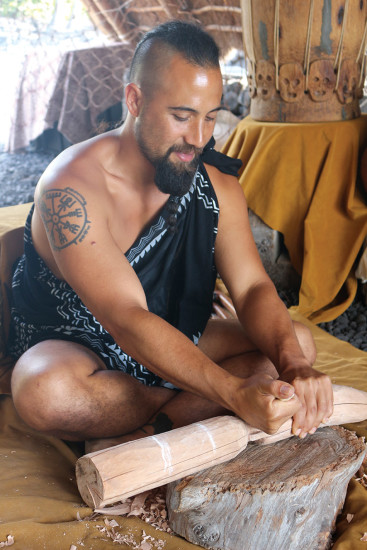
In the 1900s, the area that would become the national park was preserved by Charles Bishop, who added it to the Bishop Estate. In 1961, the National Park Service became the stewards of the Pu‘uhonua o Hōnaunau National Historical Park.
The modern-day Annual Cultural Festival began in 1974, with original funding coming from programs offering money to national parks so that they could celebrate the bicentennial of the American Revolutionary War. The very first cultural festival lasted for six days. Today the festival’s duration is two days long and is annually held in the last full weekend of June, marking the dedication of the area as a national park.
The area has seen many changes, however it has also held onto many constants. Kawai herself has spent a lot of time growing up at Pu‘uhonua o Hōnaunau. “My grandmother Katherine Domingo retired in 1997, after 25 years of service, and my dad works in the maintenance division. So when people ask me how long I’ve been here, I usually respond, ‘All my life’.” In the late 1980s and early 1990s, both of Kawai’s parents worked on the weekend and it was easiest for her and her brother to go to work with their father. “Every weekend we got up at 5 or 6am, before the birds woke up, and we helped my dad cleaning offices, wiping down tables and picking up leaves and rubbish in the park grounds. I remember having to pick up lots of noni (traditional medicinal plant) in the park grounds and I hated it. Now, the smell of noni reminds me of my childhood.” She still has a hard time believing that she works at the park herself, “I never thought I would be working here, but here I am almost seven years later!”
Kawai is one of many park rangers at Pu‘uhonua o Hōnauanau with a unique story and diverse background. Speaking to other rangers, you hear different stories of where they come from and how they came to be there. Another park ranger, Emily Welch, hails from the US mainland and has been at the park for just over two years. “No park ranger has the same story as to how they got here,” she says and goes on to point out, “The one thing that we have in common is that we all wanted to be here.”
The Future: Keeping the Pulse Alive
Kahaka‘io says, “We’re always looking forward, and what we are hoping to see on a cultural level is to enhance our cultural practices, to inspire carvers to learn how to carve their ki‘i (statues) and to carve their wa‘a, to inspire people from other islands and other places to recognize sacred places in their areas and learn what it means to take care of those places.” Kahaka‘io calls it mo‘okuene (stewardship). “Serving the ‘āina (land), and bringing that sense of balance back to a place and restoring that pulse.”
Kawai hopes to see the park remain as a place where everyone is welcome. “This park protects one of the best preserved pu‘uhonua in the Hawaiian Islands. That’s unique and special, and that’s something we want to continue to do, protect this wahi pana for future generations to be able to connect and visit.” ❖
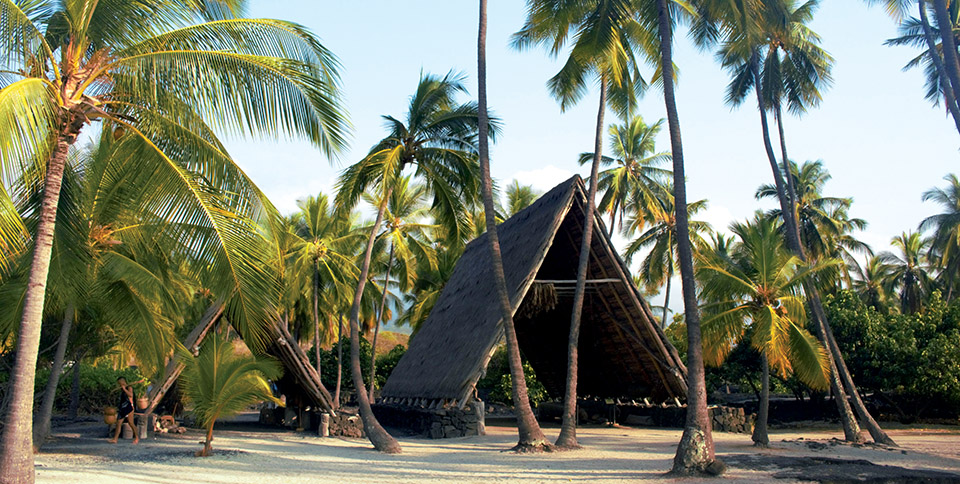
57th Anniversary and Annual Cultural Festival: Saturday and Sunday, June 23 and 24, from 9am to 3pm. Admission is free.
To volunteer, contact:
Kawailehua Domingo kawailehua_domingo@nps.gov or the Interpretation Division at 808.328.2326
For more information: nps.gov/puho/index.htm
Mahalo Kings’ Shops – Culture Story Sponsor
